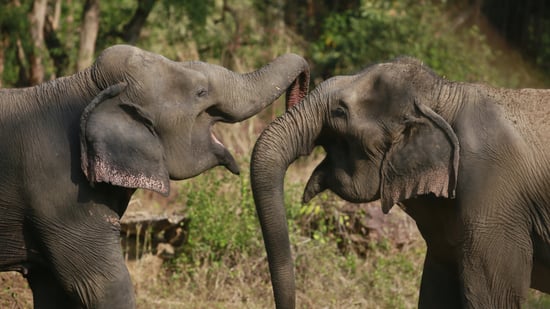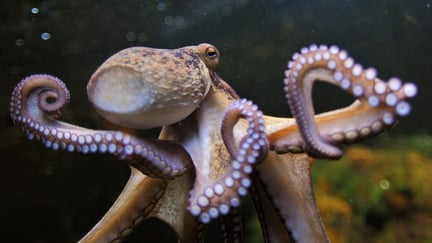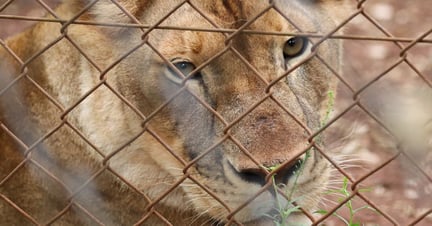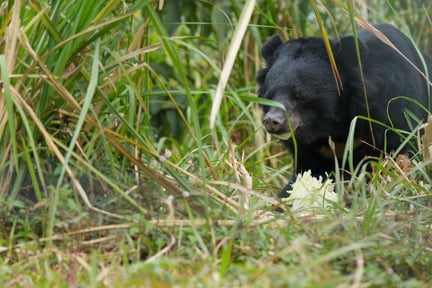
13 facts about pangolins — learn more about the scaliest mammal on Earth
Blog
Pangolins are unique and the only mammal on Earth to sport scales. But their intrigue has made them one of the most trafficked animals on the planet. Take a look at the pangolin facts below to learn more.
Pangolins are champion ant and termite eaters with scaly bodies and surprisingly long tongues. They’re invaluable to their ecosystems because they keep pests under control and help plants to grow. But pangolins are also one of the most trafficked animals on the planet. They’re sought by poachers for the exotic pet trade, traditional medicine, and as “luxury” bushmeat.
Here, we take a look at 13 fun (and not so fun) facts about pangolins and share some ideas for how you can help these shy, sentient, and endangered animals.
13 pangolin facts
1. Pangolins are mammals, not reptiles
At first glance, you may mistake a pangolin for a reptile. But they are, in fact, the only mammals on Earth to have scales.
Their brown scales are made from keratin, the same material as human fingernails, hair, animal hooves, and rhino horns. They cover most of their bodies and can account for around 20% of the pangolin’s body weight.
Beyond their distinctive scales, you can recognise a pangolin by its short, conical head, short legs, and long, thick tail.
2. Pangolins come in all shapes and sizes
Well, sort of! There are eight species of pangolin that vary slightly in shape, size, and colour. All are nocturnal and can swim short distances, though some can climb trees, while others build burrows underground.
These include the:
- Black-bellied pangolin (Phataginus tetradactyla)
- Chinese pangolin (Manis pentadactyla)
- Giant ground pangolin (Smutsia gigantea)
- Indian pangolin (Manis crassicaudata)
- Philippine pangolin (Manis culionensis)
- Sunda pangolin (Manis javanica)
- Temminck’s pangolin (Smutsia temminckii)
- White-bellied pangolin (Phataginus tricuspis)
The giant ground pangolin is the largest species. It lives in West and Central Africa, can weigh up to 33kg, and measures between 140cm and 180cm from its head to the tip of its tail.
The smallest is the black-bellied pangolin (also known as the long-tailed pangolin). It lives in tropical rainforests in Africa, where it spends nearly all its time in the treetops. This species weighs just 3.6kg.
 Credit: Vickey Chauhan/Shutterstock
Credit: Vickey Chauhan/Shutterstock
3. Pangolins are excellent pest controllers
Thanks to their diet of termites, ants, and other insects, pangolins are invaluable to their ecosystems. A single pangolin can eat up to 70 million insects per year, helping to protect crops from pests and reducing the need for toxic insecticides.
They also help aerate the soil with their snouts, tongues, and claws as they search for food. They use their forefeet to rip open nests and their long, worm-like tongues to probe insect tunnels in search of food. Fun fact: a giant pangolin’s tongue can reach up to 70cm — that’s around half its body length!
The scales on a pangolin’s body protect it from the retaliatory bites of ants and termites, but that’s not the only clever adaptation that helps them get their fill of insects. Once they’ve sniffed out a meal, a pangolin will close its ears and nostrils to prevent its prey from biting back.
4. Pangolins are burrowers
Most pangolins dig burrows with their strong front legs and claws, using their rear legs and tails for support and balance. Here, they shelter during the day before coming out to hunt once it’s dark.
They can dig burrows up to 2.5 metres deep in just a couple of minutes — and this has a big impact on their environments. Abandoned burrows act as homes for many reptiles, birds, and other small mammals, and provide shelter to surviving animals in the wake of forest fires. Their burrowing also helps degraded ecosystems recover, as the new aeration in the soil encourages plant growth.
But these burrows aren’t always a safe haven. Pangolins are sadly smoked out of their burrows by hunters, who want to catch them and sell them for profit.
5. Pangolins are the world’s most trafficked mammal
More than one million pangolins are estimated to have been killed and traded between 2000 and 2013. These animals are in high demand for the exotic pet trade and for use in traditional medicine, particularly in China and Vietnam. Pangolin meat is also considered a delicacy in some countries, while their scales are used as decorations for rituals and jewellery.
Among the saddest of pangolin poaching facts are the cruel methods used to hunt these animals. Poachers light fires to smoke pangolins out of their burrows and tree-top hollows. The pangolin is then caught, bludgeoned so it can no longer flee, and thrown into boiling water.
6. Pangolins can feel pain and stress
Pangolins are sentient beings that experience pain, fear, and stress. This is part of the reason why pangolin animal trafficking is so cruel.
When held in captivity, they suffer from chronic stress and produce high levels of cortisol, which can lead to poor immunity, increased mortality, and decreased reproduction. What’s more, as so little is known about pangolins, their needs can never be fully met in captivity. Caged pangolins often die from malnutrition, disease, and stress.
7. Pangolin mothers are protective of their “pangopups”
Mother pangolins are very protective of their babies, which are affectionately known as “pangopups.” Females carry their young on the base of their tail as they forage for food. If they are disturbed, the baby will roll into a ball and its mother will quickly coil around it, protecting it from danger.
As mammals, female pangolins give birth to live young, usually just a single baby. The pup stays with its mother for three to four months as its soft, white scales harden and it learns to hunt for itself.
 Credit: Robin Bruyns/Shutterstock
Credit: Robin Bruyns/Shutterstock
Donate now
When you make a donation, you’ll join a passionate group of supporters who are determined to change the world for animals. We're fighting animal cruelty wherever we find it — are you with us?
8. Pangolins have a natural armour
The pangolin’s overlapping scales help protect it from biting ants and termites, as well as predators like leopards, lions, tigers, and hyenas. While a large predator can sometimes pierce a pangolin’s armour, these scales provide a strong barrier against teeth and claws, so much so that scientists are studying pangolin scales in a bid to design more effective armour for humans.
A pangolin has other defensive behaviours, too. It rolls itself into a ball to protect its soft underbelly and presents erected scales to an enemy. It also emits a smelly secretion from its large anal glands, which acts as another deterrent.
All of these tactics are defensive, and pangolin behaviour is never aggressive. These animals are generally shy and solitary, and tend to live alone or in pairs.
9. Pangolin scales don’t have healing powers — just myths
In some traditional medicine systems, particularly in China and Vietnam, pangolin scales are wrongly believed to treat ailments like rheumatism, skin conditions, and lactation issues.
But pangolin scales are made from keratin — the same material as human hair and fingernails — and have no proven medicinal value.
Despite this, pangolins are heavily trafficked for their scales, fueling illegal and unsustainable trade.
Fortunately, change is happening. Here at World Animal Protection, we’ve been working to end the exploitation of animals for traditional medicine by promoting plant-based alternatives and influencing policy change China has now removed pangolin medicine from the 2025 edition of its pharmacopoeia, China’s official standard for clinical prescriptions. This does not constitute a ban on using pangolin parts in traditional medicine but it does make it harder to promote and prescribe them.
This change is welcome. But there’s still lots to do to protect pangolins and ensure they thrive within their natural habitats long into the future.
10. Pangolins have an excellent sense of smell
Next on our list of fun pangolin facts, let’s look at pangolin senses.
Pangolins don’t have the best hearing or sense of sight but they do have an excellent sense of smell. They rely on their powerful noses to find food and to navigate their environment.
Pangolins also regularly nod and shake their heads. Scientists think this may be a way to detect odours in the air and locate smells or sounds.
Alternatively, it could be a form of pangolin communication as they use their scent to establish their territory and attract a mate.
11. Pangolins live in Africa and Asia
Four species of pangolin live in Asia, including the Chinese pangolin, the Indian pangolin, the Sunda pangolin, and the Philippine pangolin (also known as the Palawan pangolin). The other four species live in Africa, south of the Sahara Desert. These are Temminck’s pangolin, the white-bellied pangolin, the black-bellied pangolin, and the giant ground pangolin.
Pangolins are found in a wide variety of habitats in places with a reliable supply of ants and termites. They live in tropical forests, swamps, thick brush, savannah grassland, and even cultivated areas like oil palm plantations.
12. Pangolins are losing their habitat
Sadly, pangolin habitat is being destroyed to make way for agricultural, residential, and infrastructure developments. Logging and land conversion are also damaging pangolin burrows and hollows, while insecticide use on the new agricultural areas decreases the availability of pangolin prey. Most worryingly of all, though, deforestation opens up previously inaccessible areas to hunting, making pangolins even more vulnerable to poachers.
13. Pangolins need your help
So are pangolins endangered? Unfortunately, yes. According to the IUCN, Temminck’s pangolin and the black-bellied pangolin are vulnerable, the giant ground pangolin, the white-bellied pangolin, and the Indian pangolin are endangered, and the Chinese pangolin, the Philippine pangolin, and the Sunda pangolin are critically endangered.
These pangolin species all face threats from the illegal wildlife trade. They are hunted as exotic pets, for use in traditional medicine, and as a source of “luxury” bushmeat. They are also threatened by habitat loss, as land is cleared in Asia and Africa to make way for human development.
Pangolins desperately need our help if they’re to avoid extinction. We need to lobby for increased pangolin protection and prevent trafficking at every step of the illegal wildlife trade.
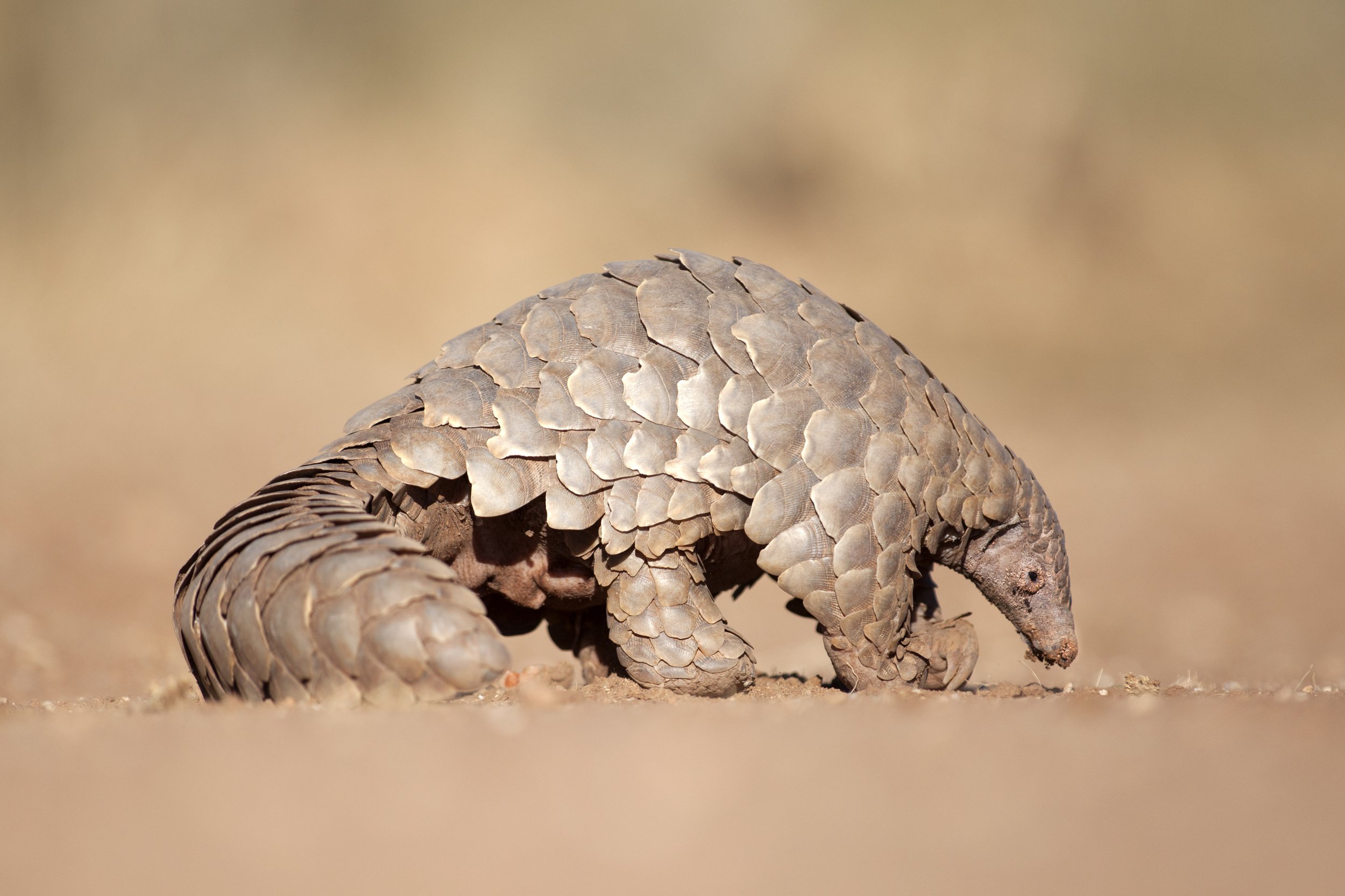 Credit: Adobe Stock
Credit: Adobe Stock
Take action for the pangolin
As you’ve seen from our facts about pangolins, these animals are some of the most unique and endangered on our planet.
You can support them by avoiding products or services that exploit pangolins and by adding your voice to wildlife protection efforts.
Want an easy way to get started? Subscribe to the World Animal Protection newsletter to find out what you can do to help pangolins and other endangered species, or donate to protect the world’s most trafficked mammal from extinction.
Pangolin facts and FAQs
What's so special about pangolins?
Pangolins are the only mammals on Earth covered in protective keratin scales — the same material found in human fingernails. They are shy, solitary, and nocturnal creatures that play a vital role in their ecosystems by eating millions of insects each year.
Despite their uniqueness, pangolins are also the most heavily trafficked wild mammals in the world. At World Animal Protection, we believe these remarkable animals belong in the wild, not in markets or medicine cabinets — and we’re working globally to protect them from cruelty and exploitation.
Why are pangolins so wanted?
Pangolins are poached for use in traditional medicine, where their scales are wrongly believed to have healing powers, and are also sold as exotic pets or consumed as “luxury” meat.
Despite the lack of scientific evidence supporting these uses, the illegal wildlife trade continues to target them. All eight pangolin species are at risk of extinction due to this demand.
Why is a pangolin so expensive?
Pangolins and their body parts are often sold at high prices on the black market because they are in high demand for traditional medicine and luxury consumption, despite having no proven benefits. Their trade is illegal, and all eight pangolin species are threatened with extinction due to overexploitation.
How many pangolins are left in the world?
It’s difficult to know exactly how many pangolins remain in the wild, as they are elusive, nocturnal animals and populations are hard to track. What we do know is alarming: all eight pangolin species are listed as either Vulnerable, Endangered, or Critically Endangered, and their numbers are declining.
Between 2000 and 2013, an estimated one million pangolins were killed and traded — and the illegal trade has continued since. At World Animal Protection, we’re calling for a global end to the commercial wildlife trade to help protect pangolins and ensure their survival in the wild.
What are the predators of the pangolin?
Natural pangolin predators include lions, tigers, leopards, and hyenas. But humans pose the biggest threat to pangolins, as poachers hunt and kill these sentient animals in large numbers. Pangolin habitat is being lost to make way for urban, agricultural, and infrastructure development. By challenging the wildlife trade and protecting ecosystems, we’re helping ensure a safer future for pangolins and all wild animals.
